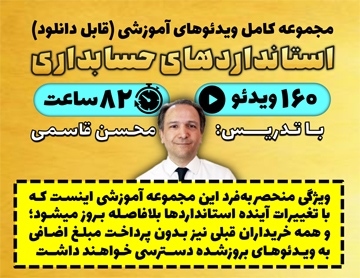صورتهای مالی جداگانه، صورتهای مالی ارائهشده توسط واحد تجاری است که به موجب الزامات این استاندارد، واحد تجاری باید سرمایهگذاری در واحدهای تجاری فرعی، واحدهای تجاری وابسته و مشارکتهای خاص را به بهای تمام شده پس از كسر هرگونه کاهش ارزش انباشته یا به مبلغ تجدید ارزیابی به عنوان یك نحوه عمل مجاز جایگزین طبق استاندارد حسابداری 15 حسابداری سرمایهگذاریها یا در مواردی خاص طبق بندهای 12، 13 و 14، به ارزش منصفانه گزارش کند. (استاندارد حسابداری 18 صورتهای مالی جداگانه (تجدیدنظرشده 1398))
6. صورتهای مالی جداگانه، صورتهای مالی است افزون بر صورتهای مالی تلفیقی یا افزون بر صورتهای مالی سرمایهگذار فاقد سرمایهگذاری در واحدهای تجاری فرعی اما دارای سرمایهگذاری در واحدهای تجاری وابسته و مشارکتهای خاص که در آنها سرمایهگذاری در واحدهای تجاری وابسته یا مشارکتهای خاص، به استثنای شرایط معین در بندهای 8 و 9، با استفاده از روش ارزش ویژه طبق الزام استاندارد حسابداری 20 (تجدیدنظرشده 1398) گزارش میشود (صورتهای مالی مجموعه).
7. صورتهای مالی واحد تجاری فاقد واحد تجاری فرعی، واحد تجاری وابسته یا منافع شریك خاص در مشارکت خاص، صورتهای مالی جداگانه محسوب نمیشود.
8. یک واحد تجاری که طبق بند 4 استاندارد حسابداری 39 (مصوب 1398)، از تلفیق، یا طبق بند 17 استاندارد حسابداری 20 (تجدیدنظرشده 1398) از بکارگیری روش ارزش ویژه معاف شده است، میتواند صورتهای مالی جداگانه را به عنوان تنها صورتهای مالی خود ارائه کند.
9. یک واحد تجاری سرمایهگذاری که ملزم است طی دوره جاری و تمام دورههای مقایسهای ارائهشده، طبق بند 33 استاندارد حسابداری 39 (مصوب 1398)، استثنای تلفیق را برای تمام واحدهای تجاری فرعی خود بکار گیرد، صورتهای مالی جداگانه را به عنوان تنها صورتهای مالی خود ارائه میکند. (همان منبع)
Separate financial statements are those presented by an entity in which the entity could elect, subject to the requirements in this Standard, to account for its investments in subsidiaries, joint ventures and associates either at cost, in accordance with IFRS 9 Financial Instruments, or using the equity method as described in IAS 28 Investments in Associates and Joint Ventures - IAS 27 Separate Financial Statements
Separate financial statements are those presented in addition to consolidated financial statements or in addition to the financial statements of an investor that does not have investments in subsidiaries but has investments in associates or joint ventures in which the investments in associates or joint ventures are required by IAS 28 to be accounted for using the equity method, other than in the circumstances set out in paragraphs 8–8A.
The financial statements of an entity that does not have a subsidiary, associate or joint venturer’s interest in a joint venture are not separate financial statements.
An entity that is exempted in accordance with paragraph 4(a) of IFRS 10 from consolidation or paragraph 17 of IAS 28 (as amended in 2011) from applying the equity method may present separate financial statements as its only financial statements.
An investment entity that is required, throughout the current period and all comparative periods presented, to apply the exception to consolidation for all of its subsidiaries in accordance with paragraph 31 of IFRS 10 presents separate financial statements as its only financial statements.





دیدگاه خود را بنویسید